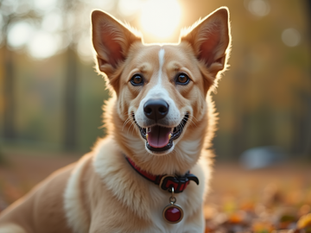
Exploring the Complex Dynamics of Dog-Cat Relationships: A Deeper Look into the Uncharted Territory
Apr 18
3 min read
0
15
0
When we think of a perfect home, many picture a serene space where dogs and cats get along. However, the reality can often be different. As we investigate the intricate dynamics of canine-feline relationships, we will uncover how these popular pets interact, from their playful behaviors to the conflicts that may arise.
The Nature of Dogs and Cats
To understand their interactions, we must first recognize the fundamental traits of both animals. Dogs, stemming from wolves, are naturally social. They thrive in packs, making them eager to bond with humans and other animals alike. In fact, studies show that dogs can recognize human emotions, responding positively to happy facial expressions 75% of the time.
Conversely, cats are more solitary. Descended from independent hunters, they often prefer to claim personal territories. While they can form close bonds, they typically do not seek constant companionship like dogs. Knowing these behaviors is essential for promoting harmony between the two species.
First Impressions Matter
The first encounters between dogs and cats can significantly shape their ongoing relationship. For instance, a puppy’s energetic antics might overwhelm a cat, triggering defensive behaviors like hissing or swatting. A study by the American Veterinary Medical Association indicates that roughly 60% of cat-dog conflicts arise during initial meetings.
To foster a smooth introduction, gradually acclimate each animal to the other's presence. Creating a separate safe space for the cat can ease this transition, allowing both pets to adjust at their own pace.
Playful Interactions
Once familiar with each other, playful moments between dogs and cats can be delightful. Dogs often engage in chasing games, while cats thrive on ambushing from hidden spots. This playful interaction not only entertains pet owners but also strengthens their bond.

However, it's crucial to closely monitor these sessions. Play can quickly escalate. Watch for signs of stress, such as a cat’s ears flattening or a dog becoming overly excited. Intervening at the right time can prevent conflicts and ensure that both animals enjoy their time together.
Conflicts and Misunderstandings
Despite the potential for companionship, conflicts frequently emerge. Jealousy becomes evident, especially when a new pet is introduced into a home with an established pet presence. Both species may exhibit aggression, indicated by barking from dogs and hissing from cats as they navigate their hierarchy.
Misunderstandings can arise from their different social cues. For example, while a wagging tail usually signals happiness in dogs, it might indicate annoyance in cats. Educating pet owners about these differences is key to improving their interactions and reducing conflict.
The Importance of Training
Effective training is vital to maintaining peace. Teaching basic commands like "sit," "stay," and "leave it" can greatly influence a dog’s behavior around a cat. For instance, a well-trained dog can
keep its distance from a cat that prefers solitude.
Positive reinforcement is an excellent training strategy. Each time a dog remains calm around a cat, rewarding them with treats or praise can strengthen this behavior. Furthermore, providing a cat with elevated spaces, like shelves or cat trees, helps them feel secure and reduces stress levels.
Understanding Body Language
Reading body language is essential in fostering good relationships between dogs and cats. Dogs may show friendliness through relaxed posture and wagging tails. In contrast, a cat may puff up its fur or flatten its ears when threatened.
Learning to interpret these signals can prevent miscommunication. When pet owners recognize these signs, they can take action to diffuse potential tensions, creating a more harmonious environment.
The Role of Environment
The living environment plays a crucial role in shaping dog-cat relationships. Having separate feeding areas, litter boxes, and resting spots helps maintain peace. Providing vertical spaces, such as cat trees, allows cats to escape to a safe place when the dog becomes too energetic.
Moreover, enriching the environment is vital. Interactive toys, puzzle feeders, and regular playtime can keep both animals engaged. This stimulation helps to alleviate feelings of competition over resources, ensuring both pets feel valued.
Expert Insights
Veterinary experts highlight the importance of patience in building relationships between dogs and cats. Every animal has a unique personality, and their comfort levels will differ. Trust is built over time, and pet owners should expect occasional setbacks.
Additionally, creating a calm home atmosphere is essential. High-energy or chaotic environments can heighten tensions between the two species. By prioritizing tranquility, pet owners can pave the way for better interactions and cooperation.

Cultivating a Peaceful Coexistence
Navigating the relationship between dogs and cats can be complex. Their contrasting behaviors can present both challenges and chances to build companionship. By understanding their innate differences, recognizing body language, and providing a structured environment, pet owners can foster a peaceful coexistence.
Ultimately, nurturing dog-cat relationships requires time, training, and a commitment to understanding. With the right approach, dogs and cats can not only coexist but also thrive together, enriching their shared home and the lives of those who care for them.





